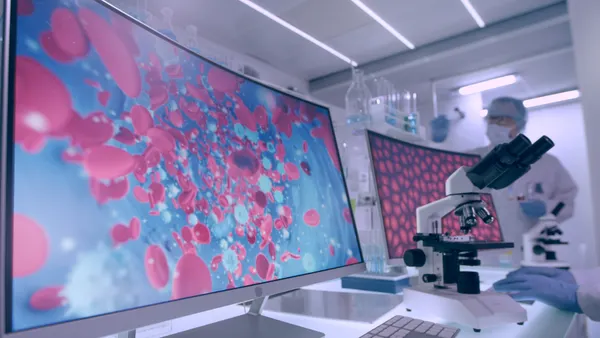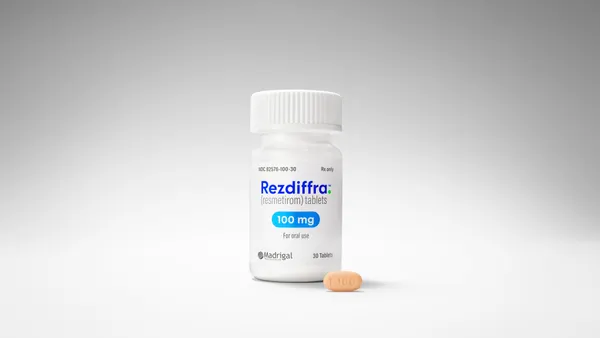As patients live longer and are increasingly diagnosed with chronic and often debilitating ailments, pharmaceutical decisionmakers find themselves examining ways to adapt their organizations to address the resulting healthcare needs in both human and business terms. According to the report, the potential for drug therapy to impact the quality of life has never been higher and is now seen as exponential, as biotech nology techniques and computational drug model ing converge with the genomic knowledge base and bioinformatics to provide powerful tools to researchers. But to fully realize the healing and market poten tial of advancing drug discovery techniques, design ers and developers must deal with a diverse spec trum of challenges that include limited drug stability and bioavailability, and patientcompliance issues stemming from compromised physical and/or cog nitive function. Developers are addressing this evolving market place environment by working closely with delivery device designers from early on in the drugdevelop ment cycle to define the optimal combination of dosing and administration. Drugdelivery providers are applying advanced technology to control drug release characteristics. The elimination of spikes in blood concentration and the lengthening of deliv ery times are aimed at reducing side effects related to immediate release and providing the conve nience of lessfrequent dosing. Medical Affairs Shift to Meet DEMANDSOF INCREASED REGULATIONS The increasingly stringent regulatory environ menthashad a dramatic impact on the organization and support of phar maceutical companies’ medical affairs function. According to a report from Cutting Edge Information (CEI), the reporting structures of medical affairs departments have shift ed away from market ing oversight over the past six years in response to pressures related to compliance. In fact, CEI data show that only 7% of medical affairs departments are currently housed under marketing, compared with 43% in 2002. Medical Affairs: Delivering Strategic Value exam ines pharmaceutical companies’ medical affairs structures, spending and staffing resources, and ment is where stem cells may have the most impact on healthcare,”says Bruce Carlson, publisher of Kalo rama Information. “Stemcell technology could pro vide a virtually endless supply of liver or heart cells for testing,saving developers tens, if not hundreds of millions of dollars in direct testing fees,as well as indi rect costs related to drug recalls.” Recognizing the potential of stem cells, Glaxo SmithKline, AstraZeneca, and Roche established a new venture in 2007, Stem Cells for Safer Medicines Ltd., to develop effective ways of using human embryonic stem cells to screen for potentially dangerous side effects of new drugs before they go into clinical trials. DRUGDEVELOPERS ANDMAKERSOF DELIVERY DEVICES Continue to Partner A number of factors are converging to create both risk and opportunity for drug makers and their devicemanufacturing partners. These factors are giving rise to a new generation of sophisticated, applicationspecific combination drugdevice prod ucts designed to satisfy patient preferences while addressing managed care initiatives and the limita tions of new classes of therapeutic drugs.Because of their ability to safely and reliably satisfy treatment protocols and compliance goals, these devices will have a significant impact on the future of patient selfadministration. A recent report from Greystone Associ ates, Drug Delivery for Se l fAdm i n i strat i on : Technologies, Combi nation Products and Pipeline Prospects, offers an evaluation and analysis of the technology, products, and participants pro viding the driving force behind this growing segment of the pharmaceuti cal industry. The report projects that therapyspecific, drug device combination products will continue to expand as device designers and drug developers collaborate to create delivery systems that address the specific needs of end users. For example, the recent escalation in new biological drugs, such as antibodies and recombinant proteins, is placing renewed emphasis on drugdelivery technologies capable of delivering drug therapies while avoiding the digestive tract. Other factors driving the catego ry include new classes of drugs for previously refrac tory conditions, the growing trend toward self administration for chronic diseases, shifting patient demographics in industrial countries,and continued pressure to control healthcare costs. STEMCELL TECHNOLOGIES Could Improve Preclinical Testing With more than 90% of drugs enter ing clinical development failing to get to market because of lack of effectiveness or adverse side effects not detected in animal tests, a solution is needed. Early toxicity testing is a particular problem, since there are currently no good mod els for determining whether a drug will be toxic in humans. Some unsafe prod ucts advance through testing and approval, only to be pulled from the market later at huge expense. Many of these issues could be avoid ed with preclinical tests using stemcell technologies, potentially saving drug developers millions of dollars. Kalorama Information’s report, Stem Cells:Worldwide Markets for Transplanta tion, Cord Blood Banking, and Drug Development, finds that although stem cellbased drug development technologies are in an early stage of development, and will most likely not become available before 2012 at the earli est, their prospects are promising. “ The excitement around stem cells has understandably been in the potential for thera py, but drug develop PHARMA TRAX SALES, MARKETING, AND R&D TRENDS AFFECTING THE HEALTHCARE INDUSTRY The excitement around stem cells has understandably been in the potential for therapy, but drug development is where stem cells may have the most impact on healthcare, says Bruce Carlson, Publisher of Kalorama Information. Bruce Carlson Stemcell technology could provide a virtually endless supply of liver or heart cells. Developers are addressing this evolving marketplace environment by working closely with delivery device designers. The increasingly stringent regulatory environment has had a dramatic impact on the organization and support of pharmaceutical companies’medical affairs function. 90 J un e 2 008 PharmaVOICE PV0608 Layout FINAL2 5/20/08 12:48 AM Page 90 PHARMA trax strategies in response to the current compliance driven, global environment. Based on interviews with medical affairs execu tives at several top pharma companies, the report provides several best practices detailing how lead ing companies adapt and thrive commercially while still remaining compliant. The study also offers strategies for how medical affairs teams can improve internal communication and coordination, as well as negotiate effectively for additional resources. “Through our research, we found that compa nies responded to the regulatory landscape in differ ent ways,” says Amanda Zuniga, lead author of the report.“Companies are extremely aware of the need to stay compliant, and they have learned to adjust. The most progressive companies have even used the regulatory changes as a springboard for growth and reexamination.” In the report, CEI analysts explore the different ways in which several top companies’medical affairs organizations are structured and the advantages and disadvantages of each structure. For example, nearly 70% of the participating pharmaceutical companies have established a centralized medical affairs structure,which helps streamline communica tion and coordination across the global markets that companies now span. Centralization enables the medical affairs func tion to accomplish many objectives, including: . Developing, implementing, and executing a uni fied medical affairs strategy . Sharing tools and best practices across different markets . Increasing functional expertise, knowledge, and specialization . Allocating resources efficiently . Meeting the global needs of the company with greater ease Yet while a centralized structure facilitates medi cal affairs’ tasks, departments continue to face chal lenges in efficiently completing them.Many medical affairs executives note that effective communication and coordination across geographical markets still present obstacles to even the most centralized of organizations. By contrast, one of the biggest advantages to having a geographically decentralized medical affairs structure is the ability of these teams to con centrate on the particular needs of an individual market. Since markets can vary widely, this narrower focus allows teams to customize their efforts solely based on the necessities of their market. A decentralized structure nonetheless lacks many of the benefits of a centralized one — in par ticular, the ability to efficiently share tools and pro cesses.Moreover,decentralized medical affairs teams sometimes find it more difficult to launch a unified medical affairs strategy. PRESCRIPTIONDRUG ABUSE Threatens Availability of Pain Medication Abuse of prescription pain medications is a rapidly growing problem in the United States, in part because of ease of access to these products.Accord ing to the 2008 National Drug Control Strategies Report,71% of prescription pain medication abusers obtained the drugs from family and friends, and prescription drug abuse exceeds marijua na use among 12 to 13yearold children. This troubling trend is causing regulators to consider restricting cer tain pain medicines or pulling them off the market altogether, a sit uation that will hurt the United States’ 75 million chronic pain patients. Lawmakers are committed to helping pain suf ferers, but their resolve is hampered by what seems to be a tradeoff between allowing continued access to pain relief and public safety from drug abuse. “Chronic pain remains undertreated in this coun try,” says Albert Ray, M.D., chairman of The National Pain Foundation. “Every morning millions of people wake up in pain,unable to work or just live their lives. The social and economic costs for society and for people living in pain are enormous.” The National Pain Foundation hopes that greater general awareness of the importance of safe and appropriate use of prescription drugs will help main tain chronic pain sufferers’ access to vital medica tions. Doctors and other members of the medical community can be especially effective in preventing prescription drug abuse. About 180 million Ameri cans age 18 or older consult their healthcare provider at least once a year.These visits are valuable opportunities to educate patients and screen for drug and alcohol abuse. “It’s up to each of us to make sure that irrespon sible use of prescribed pain medications does not make it harder for legitimate pain patients to have access to drugs that can greatly improve their quali ty of life,” Dr. Ray says. New Therapies Won’t Outperform Current LUNGCANCER REGIMEN Despite the impending emergence of a promis ing new wave of treatments for nonsmallcell lung cancer (NSCLC), physicians believe they will not match the current goldstandard regimen for treat ing the disease. That’s the finding in the Decision Resources report, NonSmallCell Lung Cancer (Advanced): Current GoldStandard Therapy Continues to be Most Efficacious. The current regimen used as a first line treatment for the disease is comprised of Avastin,from Roche and Genentech; and Taxol and Paraplatin, both from BristolMyers Squibb. “Although some therapies in development for advanced NSCLC hold promise, most have efficacy, safety and tolerability, and/or delivery features that merit inferior scores compared with the Avastin/Taxol/Paraplatin regimen,”says Andrew Mer ron, Ph.D., analyst at Decision Resources. “A therapy’s effect on overall survival is the attribute that most influences prescribing decisions in advanced nonsmallcell lung cancer,” Dr. Merron continues. “Data and the opinions of interviewed thought leaders indicate that Avastin/Taxol/Para platin has advantages over the salesleading combi nation of SanofiAventis’ Taxotere and BristolMyers Squibb’s PlatinolAQ on overall survival.” According to the report, AstraZeneca’s nextgen eration NSCLC therapy, Zactima, is expected to launch this year in the United States and Europe,and in Japan in 2010. The report projects that Zactima will earn 4.7% patient share by 2016.Surveyed oncol ogists indicate that they would prescribe Zactima to 30% of their patients with advanced nonsmallcell lung cancer.But 38%of the physicians surveyed indi cate they will use Zactima as an adjunct to current therapy rather than as a replacement. COMPANIES’MEDICAL AFFAIRS STRUCTURES Abuse of prescription pain medications is a rapidly growing problem in the United States, in part due to ease of access. Centralized Decentralized Other 69% 25% 6% . One company has both a centralized and decentralized structure Source:Cutting Edge Information,Durham,N.C. For more information, visit cuttingedgeinfo.com. Physicians believe newer therapies will not match the current gold standard regimen for treating the disease. 91 PharmaVOICE J un e 200 8 PV0608 Layout FINAL2 5/20/08 12:48 AM Page 91 operational changes,as well as integrating the sales force into the CI communication process to transmit information learned from customers. Companies surveyed for the Best Practices study use tools and techniques ranging in complexity, from picking up the phone and calling a competitor to monitoring the air emissions outside a competi tor’s manufacturing plant. Additionally, benchmark companies leverage other groups’ analyses to supplement competitive intelligence collection efforts.For example,CI groups engage the salesforce and other field operations in gathering competitor data, review winloss analyses, and interview employees whopreviously worked for other companies. These methods help keep data collection costs down while increasing the CI group’s exposure in the organization. A company’s salesforce can prove to be an invaluable resource for gathering, communicating, and incorporating competitive intelligence into strategy.The salesforce can learn a great deal of infor mation about competitor products and messages through dealings with customers. In turn, CI teams can provide the salesforce information to help them sell to customers. Perhaps the most direct method that illustrates the integration of competitive intelligence into mar ket strategy is to provide the salesforce promotional material that reinforces one product over a competi tor’s brand. Pharmacy Automation Could Help Reduce PRESCRIPTION ERRORS Onethird of the United States’ 225 million pre scriptiontakers say they have either personally experienced a prescrip tion error or know someone who has. An estimated 1.5 million people become sick, injured, or die annually as a result of medica tion errors, and 88% of medication errors result from the wrong drug or dose. Yet most con sumers choose their pharmacies for speed and convenience,rather than safe prescription practices, according to a national consumer survey conducted by Parata Systems. More than half of survey respondents cited prox imity to work or home as the No.1 reason for choos ing a pharmacy, followed by pricing at 23%. But a pharmacy’s use of automated dispensing equip ment, a proven strategy for reducing prescription errors, ranked last in importance, cited by just 2% of respondents. The Parata Prescription Safety 2008 survey, avail able at myprescriptionsafety.org, notes that more than half of American adults take at least one pre scription daily. As the country prepares to sustain a generation of aging baby boomers, the number of people tak ing multiple prescriptions will only increase; the esti mated number of prescriptions filled in the United States exceeded 4 billion in 2007,compared with 2.6 billion just 10 years ago. Consumers decisively ranked pharmacists (49% of respondents) over doctors (15%) as principally responsible for ensuring their prescriptions are accu rate, the survey found. While 91% of consumers sked could name the doctors who wrote their last prescriptions, only 36% could name the pharmacists who filled them. Further, the vast majority of pre scriptiontakers (80%) spend less than two minutes speaking to their pharmacists when they pick up their medications,and almost half (45%) don’t talk to them at all. “People think nothing of waiting an hour to spend 10 minutes with their doctors, while at the pharmacy their focus is on speed,”says Tom Rhoads, executive VP of Parata. “Yet, spending that same 10 minutes with their pharmacists can literally save lives.” With the average pharmacy filling more than 60,000 prescriptions a year, automated dispensing technology is an important tool to help these busy pharmacies handle their prescription load with a greatly reduced risk of error. ONCOLOGY MARKET Offers High Risk, Reward The oncology market has experienced signifi cant change in recent years, creating opportunities for a range of new and established biotechnology players.New product development still presents sig nificant risk for industry players but is essential to remain competitive within the category. The Cancer Market to 2012 is a new report from Business Insights that provides comprehensive cov erage of the major mar kets in global cancer care. The report ana lyzes current leading treatment brands with in each cancer indica tion and profiles eight of the market’s leading players. Oncology accounts for the thirdlargest source of revenue with in the pharmaceutical industry. Major companies have begun to focus Use of Multiple Sources Strengthens COMPETITIVE INTELLIGENCE The key to collecting meaningful competitive intelligence (CI) is using multiple information sources to gather data. Bestinclass CI groups use a variety of meth ods and often experi ment with new collec tion sources to ensure datagathering efforts cover as much ground as possible. Research conduct ed by Best Practices, Competitive Intelli gence Case Studies and Techniques for Excel lence, outlines the ben efits of collecting and synthesizing data from public documents to spot PHARMA trax A company’s salesforce can prove to be an invaluable resource for gathering, communicating, and incorporating competitive intelligence into strategy. Onethird of the United States’ 225 million prescriptiontakers say they have either personally experienced a prescription error or know someone who has. The oncology market has experienced significant change in recent years, creating opportunities for a range of new and established biotechnology players. IMPORTANT LESSONS IN COMPETITIVE INTELLIGENCE GATHERING # Ask why the information is needed. If you can explore with the clients what would happen if they did or did not get that information, you can determine what and how to deliver the information back to the client. # Involve product team members in CI efforts. Since CI groups often act as industry generalists, product team members must supply the specific topic expertise. CI groups are experts at getting the information, but they need to partner with the brand teams to optimize both groups’knowledge. # Keep it timely and keep it quick. A 300 page CI report is often useless to the stakeholder.Lengthy reports are nice to have but tough to implement. # Keep communication informal.Formal reports look nice on the shelves, but they are not often acted upon. Informal communication works better with CI. Source:Best Practices, Competitive Intelligence Case Studies and Techniques for Excellence. For more information, visit bestinclass.com. 92 J un e 2 008 PharmaVOICE PV0608 Layout FINAL2 5/20/08 12:48 AM Page 92 PHARMA trax R&D activities upon the development of com pounds with strong prospects across multiple indi cations, as efforts to create blockbuster products intensify. The subsequent increases in product sales volumes are rapidly changing the competitive land scape of the cancer market. Some key findings of the report: . The cancer market expanded by 17.9% during 2006 and is forecast to reach $40.9 billion by 2012. The highest growth will occur in the anti neoplastic class of drugs, which is expected to become the primary growth driver of the cancer market over the next four years. . The leading eight companies represented $17.9 million, or 65%, of the global cancer market in 2006. AstraZeneca and Novartis are forecast to achieve the most rapid growth in their cancer portfolios over the forecast period, with modest gains expected for Amgen, SanofiAventis, and Lilly. . New launches such as GlaxoSmithKline’s Tykerb, Pfizer’s Sutent, and Nexavar from Bayer and Onyx Pharmaceuticals will continue to drive rapid mar ket growth because of their utility across multiple indications and specific sideeffects profiles. . With several leading blockbuster oncology prod ucts set to lose patent protection over the fore cast period, immense opportunities will open up for generic manufacturers. . Major companies have begun to focus R&D activities upon the development of compounds with strong prospects across multiple indica tions, as efforts to create blockbuster products intensify. Future blockbusters are forecast to include AstraZeneca’s Zactima and Recentin, as well as Merck’s cervical cancer vaccine, Gardasil. . Colorectal cancer, nonsmallcell lung cancer, breast cancer, and ovarian cancer are the most common indications targeted by oncology drugs in development. Additional indications, such as renal cell carcinoma and nonHodgkin’s lymphoma, offer significant incentives for drug developers if the molecules are granted orphan drug status. BEST PRACTICES LLC,Chapel Hill, N.C., is a research and consulting firm that studies the best business practices, operating tactics, and winning strategies of worldclass companies.For more information, visit bestinclass.com. BUSINESS INSIGHTS,London, is a market analysis company.For more information, visit globalbusinessinsights.com. CUTTING EDGE INFORMATION,Durham, N.C., provides research and consulting to the pharmaceutical industry and the financial services industry. For more information, visit cuttingedgeinfo.com. Follow up DECISION RESOURCES INC.,Waltham,Mass., provides market research and advisory services on significant drug markets. For more information, visit decisionresources.com. GREYSTONE ASSOCIATES,Amherst,N.H., is a medical and healthcare technology consulting company that provides services in strategic planning,venture development,product commercialization,and technology and market assessment.For more information,visit greystoneassociates.org. KALORAMA INFORMATION,NewYork,a division of MarketResearch.com,conducts independent market research for the lifesciences industry. For more information, visit kaloramainformation.com. THE NATIONAL PAIN FOUNDATION, Englewood,Colo., is a nonprofit advocacy group that provides information, education, and support to chronic pain patients and their communities.For more information, visit nationalpainfoundation.org. PARATA SYSTEMS LLC,Durham,N.C., makes automated dispensing systems and other safety technology solutions for pharmacies.For more information, visit parata.com. COMPETITIVE DYNAMICS OFTHEGLOBALCANCERMARKETBYDRUGCLASS,2006 30% 25% 20% 15% 10% 5% 0% 0% 10% 20% 30% 40% 50% 60% 70% Market share, 2006 (%) Source:Business Insights, London.For more information, visit globalbusinessinsights.com. Cytostatic hormone therapies Immunostimulants Antineoplastics COMPETITIVE DYNAMICS OFTHE LEADING BRANDS INTHE GLOBAL CANCERMARKET,20052006 130% 110% 90% 70% 50% 30% 10% 0% 10% Casodex Copaxone Rebif Arimidex Eloxatin Avastin Herceptin Neulasta MabThera Gleevec Gemzar Neupogen Taxotere Avonex 1% 2% 3% 4% 5% 6% 7% 8% Source:Business Insights, London.For more information, visit globalbusinessinsights.com. 93 PharmaVOICE J un e 200 8 PV0608 Layout FINAL2 5/20/08 12:48 AM Page 93
An article from










